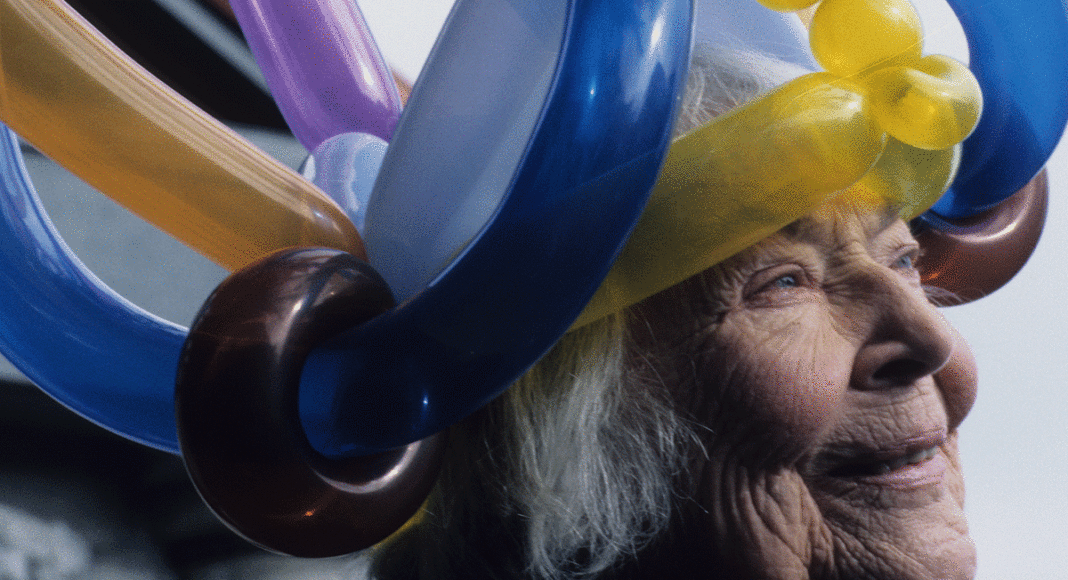In his four years helping UCSC students search for deeper meaning in their lives, artist Addi Somekh has seen firsthand the impact of young people discussing big concepts.
“Teaching is a very spiritual job, because you’re broadcasting these seeds, and you don’t know where they’ll end up in the future,” says Somekh, a UCSC grad himself, reflecting on his recent class, Meaning, Paradox, and Love, which wrapped up earlier this month. “You’re almost like a prism where the light shoots through you, and then it shoots out in all these different directions, and the light gets picked up by someone else and they’re going to run with it.”
Somekh’s spring class—inspired by many conversations with his mentor Mary Holmes—is part philosophy and part writing, with an emphasis on connecting with others through deep personal conversations. Every student interviewed someone in the community more than 70 years old to talk about life. In a town where many locals often bemoan the disconnect between university students and the rest of the city, each conversation bridged a “generational divide,” Somekh says, establishing an intimate bond between complete strangers.
“It was one of the most incredible experiences of my life,” says Georgia Sullivan, a freshman anthropology student.
Somekh was a student at UCSC from 1990-1994, and he met Holmes when he was 19 years old at Penny University, an informal gathering created by Cowell College Founder Paige Smith. (The group has been meeting every Monday for nearly 40 years.) Holmes, who was among Cowell’s founding faculty, was 80 at the time, and she taught lessons that he’s passed onto his students, he says.
“Mary would say that everybody has to find some meaning in life,” says Somekh, who’s bounced back and forth over the years between Santa Cruz and Los Angeles, where he returned after the school year ended. “People won’t live meaningless lives. So the search for meaning is universal. The nature of paradox is universal, because paradox is the mystery of the operating system of the universe. And that love is so powerful that even the absence of love affects people. So the search for meaning, the nature of paradox, and the power of love are universal experiences that connect all human beings.”
The foundation of the class, Somekh says, was the interview assignment, with students mining their subject’s experiences for priceless insights.
“The DNA of the class is for a college student to find someone who is older and ask them questions about what this whole thing is about,” he explains. “When you’re in the fourth quarter, you can look back and start making sense and be at peace with things that you were never able to change—that could be a cautionary tale for somebody who is about to enter the real world.”
Back in Somekh’s student days, his own conversations with Holmes—who died in 2002—turned into 80 hours of interviews that later served as the subject of his book, Mary Holmes: Paintings and Ideas. A few years ago, Faye Crosby, then the provost of Cowell College, saw the book and invited Somekh to start teaching a class. The first class, four years ago, only had 13 students. The following year that doubled. This year, 130 students signed up.
“The way Mary affected me is that she was like emotional Windex. When she would talk, everything that was murky was clear. I could see better. I had better perspective,” Somekh says.
Students in his class read books like Victor Frankl’s Man’s Search for Meaning, and heard from perspectives from various speakers, including a man who was released from jail at age 70, eager to live the rest of his life.
For her assignment, Sullivan interviewed an intersex Vietnam veteran who she met while working at the Penny Ice Creamery’s downtown kiosk. The two met several times afterward, with Sullivan accumulating eight hours of interviews. The interviewee told Sullivan that she liked that the 19-year-old wasn’t afraid to ask anything. “We established this really close connection because her tears were falling on my hands, and she was sharing these really intimate things,” Sullivan says.
Sullivan says the class inspired her to ask questions that she never would have asked before.
For many students, the experience has been life-changing. Somekh says one student had had a bad year and interviewed a man who had scoliosis and had been told he couldn’t heal from it. But he managed to get better by stretching with a stick. “All the shit that she was depressed about—she realized that she could take control of her destiny,” Somekh says. “She said, ‘I’m not a victim. If I see how this guy survived something that was so much worse than what I was going through, I could handle this.’ That’s really the whole point.”
When each student finished their paper, they sent a copy to the interviewee.
The challenge is for students to break out of their comfort zones and learn in unconventional ways, says Somekh, an artist best known for his life as a balloon-twister. (He will have an installation at the Museum of Art and History in August that will touch on similar themes, Somekh says, and include a giant balloon sculpture called “Elephant and Six Blind Indian Guys.”)
Next year, Somekh—who owns his own company, New Balloon Art—may take a break from the class while he focuses on his craft. Last spring, students told Somekh that, out of the three class sections, they enjoyed paradox the most.
“Paradox is the mysterious ecosystem of the universe—the yin and yang—the fact that two things can be totally opposite and both true,” Somekh says. “For instance, if you’re a surfer, you have to be submissive to the wave, but you have to be in control.”














